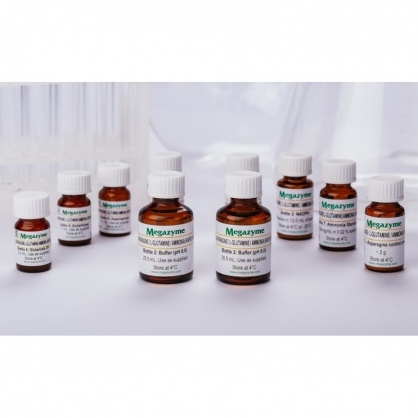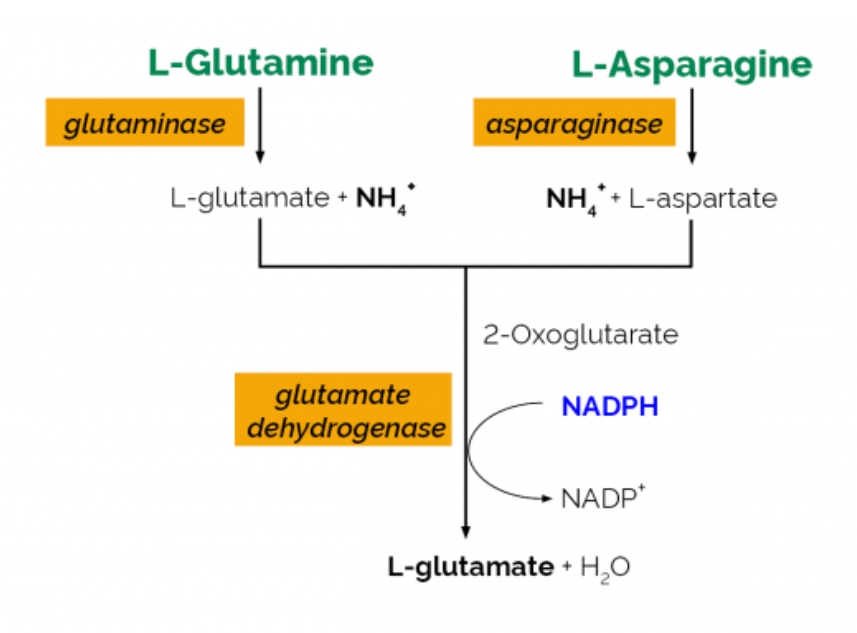- 背景資料
1️⃣丙烯醯胺(Acrylamide)已被世界衛生組織國際癌症研究機構(簡稱IARC)歸類為group 2A,可能會造成人類癌症之致癌物。
2️⃣在120℃以上的加熱條件下,食品中所含之天門冬醯胺酸(asparagine)與還原醣會形成丙烯醯胺,此反應較常見於高溫油炸或烘烤澱粉類之食品,例如馬鈴薯、穀類、咖啡...等產品。
- A. MANUAL FORMAT:
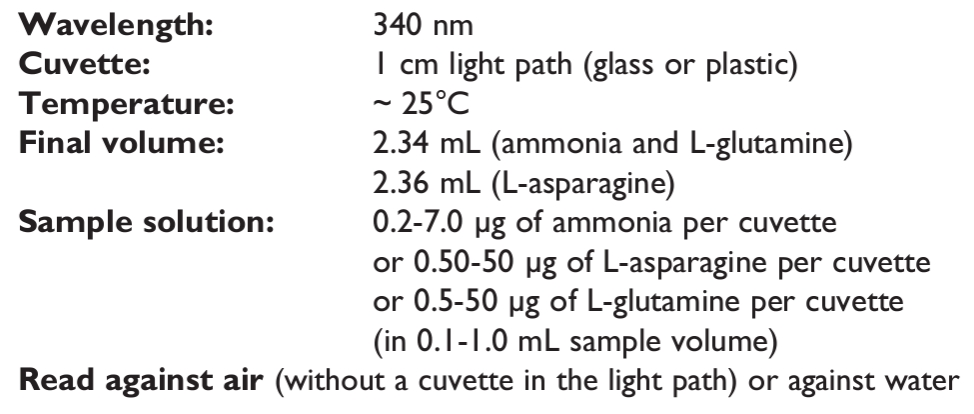
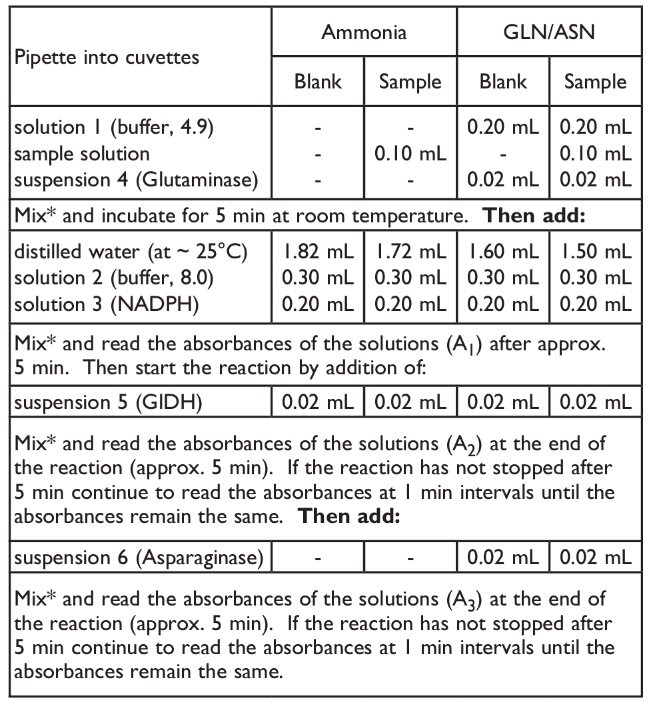

- B. MICROPLATE FORMAT:
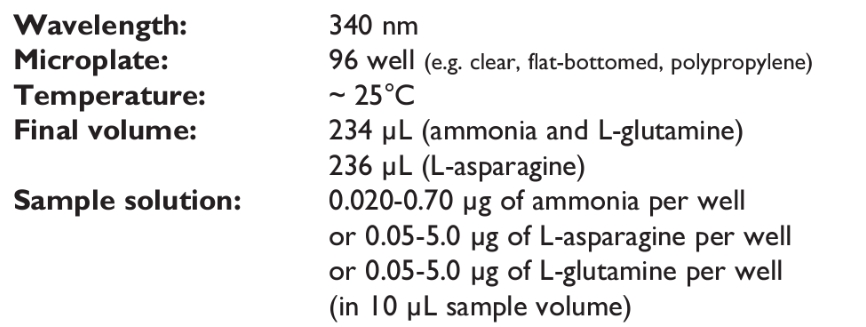
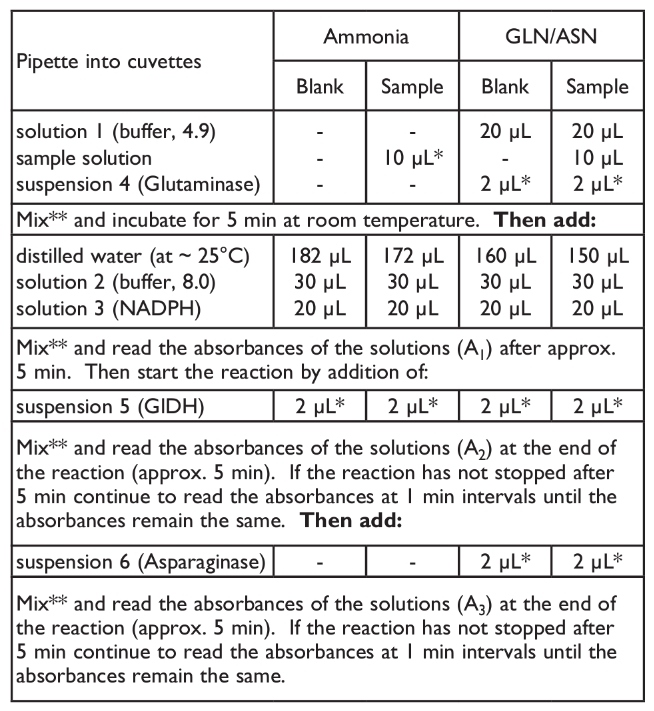

- SAMPLE PREPARATION:
1. Sample dilution.
The amount of L-glutamine and L-asparagine present in the cuvette (i.e. in the 0.10 mL of sample being analysed) should range between 0.05 and 50 μg. The sample solution must therefore be diluted sufficiently to yield a concentration between 0.005 and 0.50 g/L.
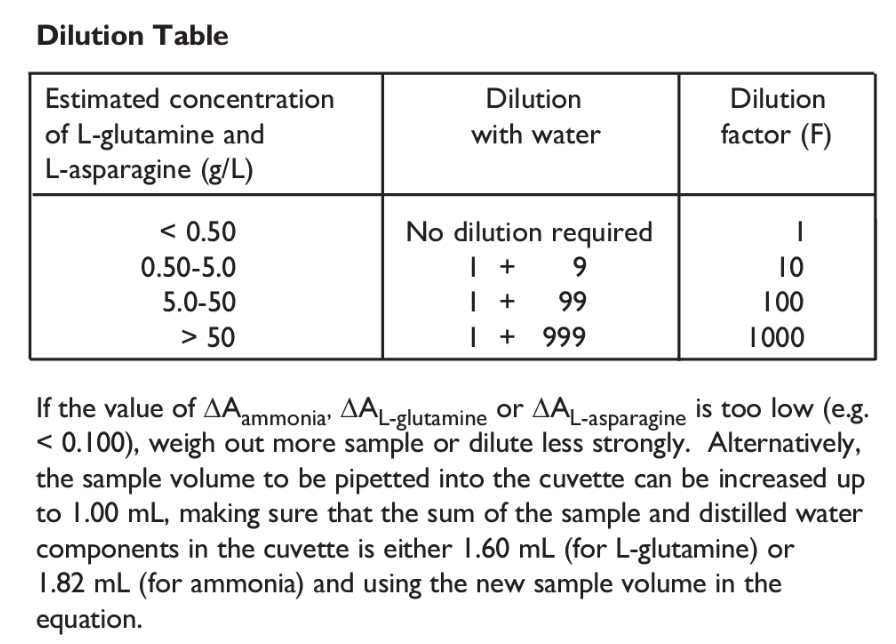
2. Sample clarification.
Carrez reagents cannot be used for deproteinisation as their use results in significantly reduced recoveries. Perchloric can be used as an alternative (see specific example).
3. General considerations.
NB - these considerations are for the analysis of complex samples, such as foodstuffs and beverages. They are not necessary in the analysis of cell culture media/supernatants; see “Sample preparation example A”.
(a) Liquid samples: clear, slightly coloured and approximately neutral, liquid samples can be used directly in the assay.
(b) Carbon dioxide: samples containing significant quantities of carbon dioxide, such as beer, should be degassed by increasing the pH to approx. 8.0 with 2 M NaOH and gentle stirring, or by stirring with a glass rod.
(c) Coloured samples: an additional sample blank, i.e. sample with no GlDH, may be necessary in the case of coloured samples.
(d) Strongly coloured samples: if used undiluted, strongly coloured samples should be treated by the addition of 0.2 g of polyvinylpolypyrrolidone (PVPP)/10 mL of sample. Shake the tube vigorously for 5 min and then filter through Whatman No. 1 filter paper.
(e) Solid samples: homogenise or crush solid samples in distilled water and filter if necessary.
(f) Samples containing fat: extract such samples with hot water at a temperature above the melting point of the fat, e.g. in a 100 mL volumetric flask at 60°C. Adjust to room temperature and fill the volumetric flask to the mark with water. Store on ice or in a refrigerator for 15-30 min and then filter. Discard the first few mL of filtrate and use the clear supernatant (which may be slightly opalescent) for assay.
(g) Samples containing protein: deproteinise samples containing protein by adding an equal volume of ice-cold 1 M perchloric acid with mixing. Centrifuge at 1,500 g for 10 min and neutralise the supernatant with 1 M KOH.
商品特色
商品規格
- 商品規格 100 檢測反應 (50 of each)
Bottle 1:
Buffer (11 mL, pH 4.9) plus sodium azide (0.02% w/v) as a preservative.
Stable for > 2 years at 4°C.
Bottle 2: *2
Buffer (25.5 mL, pH 8.0) plus 2-oxoglutarate and sodium azide (0.02% w/v) as a preservative.
Stable for > 2 years at 4°C.
Bottle 3: *2
NADPH. Lyophilised powder.
Stable for > 5 years below -10°C.
Bottle 4:
Glutaminase suspension (1.1 mL).
Stable for > 2 years at 4°C.
Bottle 5:
Glutamate dehydrogenase suspension (2.2 mL).
Stable for > 2 years at 4°C.
Bottle 6:
Asparaginase suspension (1.1 mL).
Stable for > 2 years at 4°C.
Bottle 7:
Ammonia standard solution (5 mL, 0.04 mg/mL) in 0.02% sodium azide.
Stable for > 2 years at 4°C.
Bottle 8:
L-Asparagine control powder (~ 2 g).
Stable for > 2 years at 4°C
